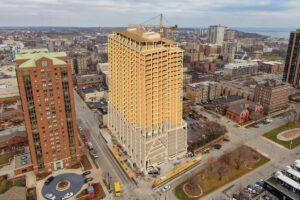Normally, when a home or commercial building needs to be torn down, the owners call in the muscle—heavy equipment such as a trackhoe (backhoe on tracks) for the general bashing, and trucks to carry the debris to the dump. Now there is an alternative—one that could be more cost effective while saving landscaping from being destroyed along with the building.
In many cities, a new category of businesses has emerged— deconstruction companies. These cutting-edge companies take buildings apart piece by piece and then donate everything from the floorboards to the doorknobs to a nonprofit. In turn, the nonprofit sells the used building materials, right down to the nails and screws that are removed and sold to metal recyclers. The company is paid for its work, but there is an added benefit for the owners. At the end of the year, they can claim a sizeable, tax-deductible donation. Not a bad deal for all concerned.
The deconstruction company also saves by not having to pay a fee at the landfill or face the prospect of having some of the debris rejected. The Seattle Post-Intelligencer reports that, last year, one-third of the city’s total trash, when measured by weight, came from demolition projects. Some counties are now considering rejecting recyclable wood and metal at their landfills.
Admittedly, the deconstruction process takes days longer than the backhoe method. When comparing costs, however, the deconstruction companies seem to have a small edge. As for creating more new jobs, the nonprofits are thriving by selling the old materials to a steady stream of customers who prefer the well-worn door knob with the deep patina to the bright, new brass fixture at the local home supply store. It is a matter of taste of course, but it is beginning to also be a matter of money.



